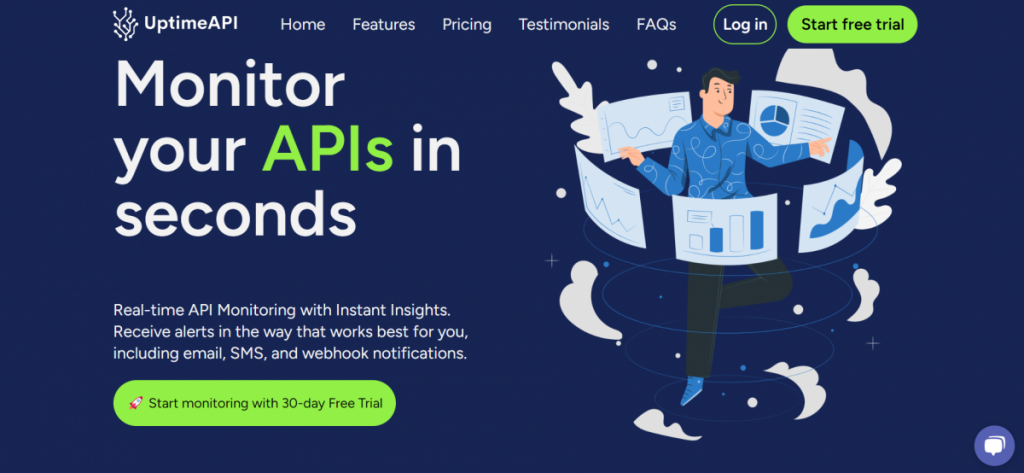In today’s digitally connected world, ensuring the uptime and availability of online services is paramount. Downtime can result in lost revenue, erode customer trust, and damage brand reputation. To address this critical need, UptimeAPI emerges as a powerful solution. In this article, we will explore what this API Monitoring Tool is, delve into its functionality, examine how it works, and provide real-world use cases to illustrate its impact.
What is Uptime API?
Uptime API is a sophisticated uptime monitoring tool designed to track and ensure the continuous availability of online services, websites, and APIs. At its core, it provides real-time monitoring of specified endpoints, alerting users to any downtime or performance issues. Let’s break down its key features and functionalities.
Key Features of UptimeAPI
-Monitoring Multiple Endpoints: Uptime API allows users to monitor multiple endpoints simultaneously. This capability is essential for businesses with complex digital ecosystems, ensuring that all critical services are continuously checked for availability.
-Customizable Alerting and Notification System: It offers a highly customizable alerting and notification system. Users can set specific alerting thresholds and choose from various communication channels for receiving notifications, such as email, SMS, Slack, and more.
-Historical Performance Data Retention: It stores historical performance data, enabling users to analyze past trends and patterns. This feature empowers organizations to make data-driven decisions for optimizing their services.
How To Use The Uptime API?
1: Create an account on the Uptime API Website.
2: Complete the required details in the registration form. You can also, register with Google or GitHub.
3: After signing up, you will receive a verification email.
4: Choose one of the 3 available plans (basic, pro, and plus). There is a 30-day free trial period.
5: When you’re done, click on “Monitors” and then click on “New Monitor”. Complete the required data: API’s name, URL, HTTP Method, etc.
6: Finally, click “Create” and the service will monitor the API, by regularly checking the status.
Real-World Use Cases
Let’s explore two real-world use cases that demonstrate the tangible benefits of UptimeAPI:
Case Study 1: E-commerce Platform
An e-commerce platform integrated Uptime API to prevent downtime during peak shopping seasons. UptimeAPI’s real-time alerts and historical data analysis ensured uninterrupted service, leading to increased revenue and customer satisfaction.
Case Study 2: Cloud Service Provider
A cloud service provider relies on Uptime API to enhance the reliability of its infrastructure and services. Reduced service disruptions and improved customer trust resulted in increased client retention and business growth.
Watch this video. With this video, you will learn how to monitor an API with this service. It’s very simple.
In conclusion, Uptime API is a vital tool for organizations that prioritize service availability and reliability. Its real-time monitoring, customizable alerts, and historical data analysis empower businesses to proactively address issues, enhance user experiences, and make data-driven decisions for optimization. In an era where digital services are integral to business success, this tool stands as a crucial asset for ensuring uptime and maintaining customer trust.
You can also take a look at this interesting article: Which Tool Can Do API Testing In 2024?



